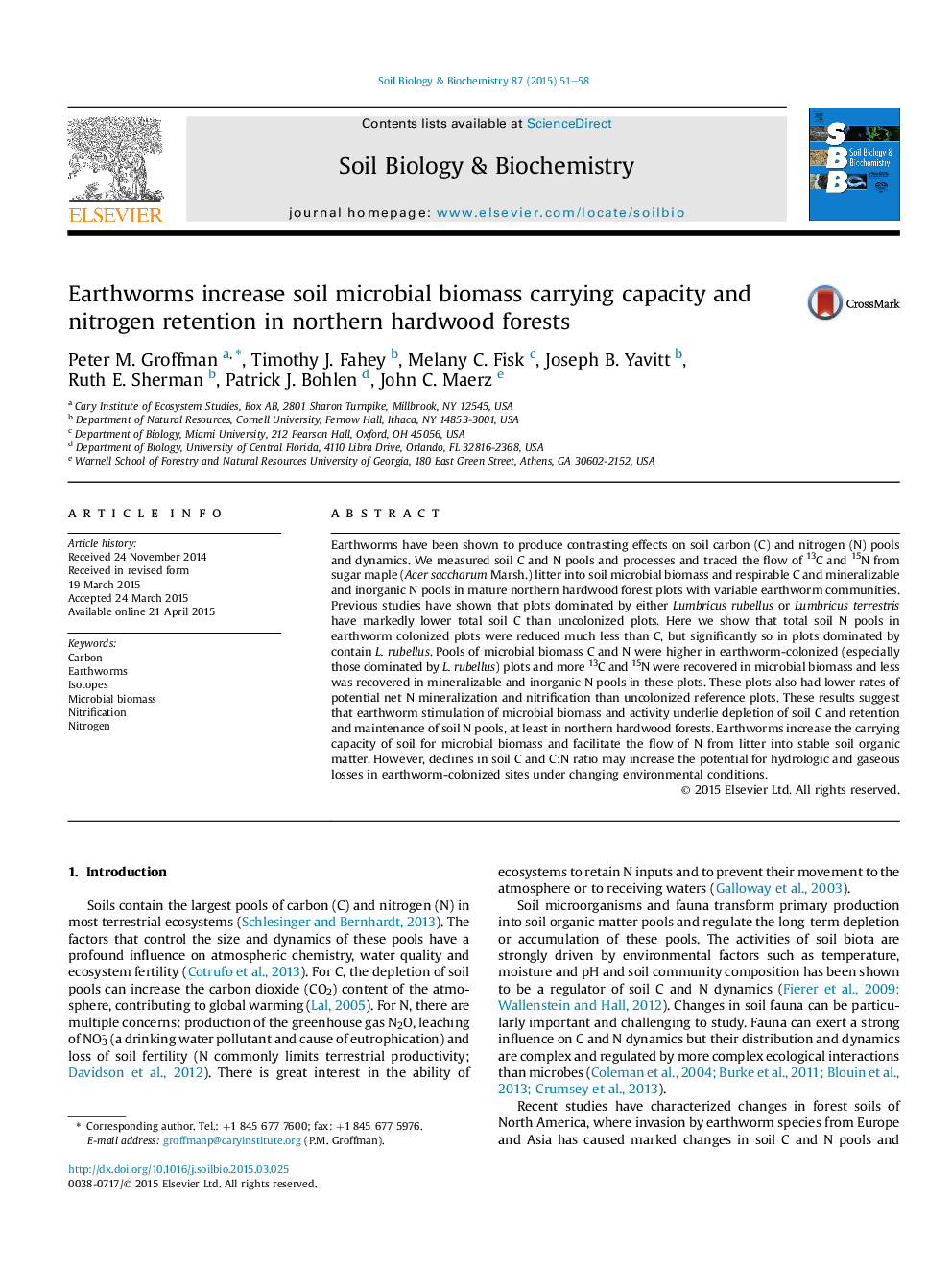| کد مقاله | کد نشریه | سال انتشار | مقاله انگلیسی | نسخه تمام متن |
|---|---|---|---|---|
| 2024500 | 1542597 | 2015 | 8 صفحه PDF | دانلود رایگان |
• Earthworms deplete forest soil carbon more than nitrogen.
• Increases in microbial biomass increase nitrogen flow to soil organic matter (SOM).
• SOM and microbial biomass effects differ for epigeic and anecic earthworms.
Earthworms have been shown to produce contrasting effects on soil carbon (C) and nitrogen (N) pools and dynamics. We measured soil C and N pools and processes and traced the flow of 13C and 15N from sugar maple (Acer saccharum Marsh.) litter into soil microbial biomass and respirable C and mineralizable and inorganic N pools in mature northern hardwood forest plots with variable earthworm communities. Previous studies have shown that plots dominated by either Lumbricus rubellus or Lumbricus terrestris have markedly lower total soil C than uncolonized plots. Here we show that total soil N pools in earthworm colonized plots were reduced much less than C, but significantly so in plots dominated by contain L. rubellus. Pools of microbial biomass C and N were higher in earthworm-colonized (especially those dominated by L. rubellus) plots and more 13C and 15N were recovered in microbial biomass and less was recovered in mineralizable and inorganic N pools in these plots. These plots also had lower rates of potential net N mineralization and nitrification than uncolonized reference plots. These results suggest that earthworm stimulation of microbial biomass and activity underlie depletion of soil C and retention and maintenance of soil N pools, at least in northern hardwood forests. Earthworms increase the carrying capacity of soil for microbial biomass and facilitate the flow of N from litter into stable soil organic matter. However, declines in soil C and C:N ratio may increase the potential for hydrologic and gaseous losses in earthworm-colonized sites under changing environmental conditions.
Journal: Soil Biology and Biochemistry - Volume 87, August 2015, Pages 51–58
